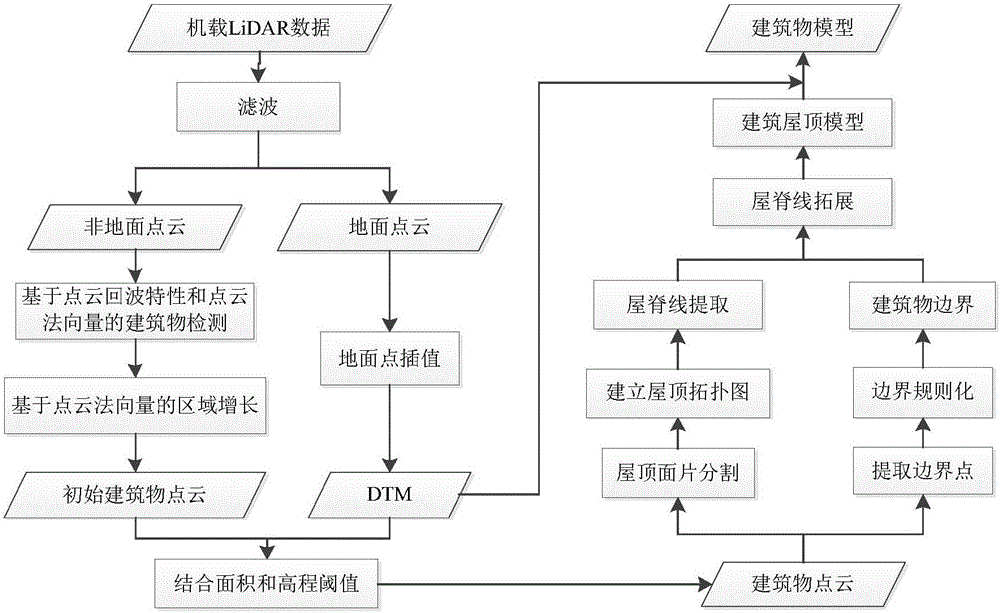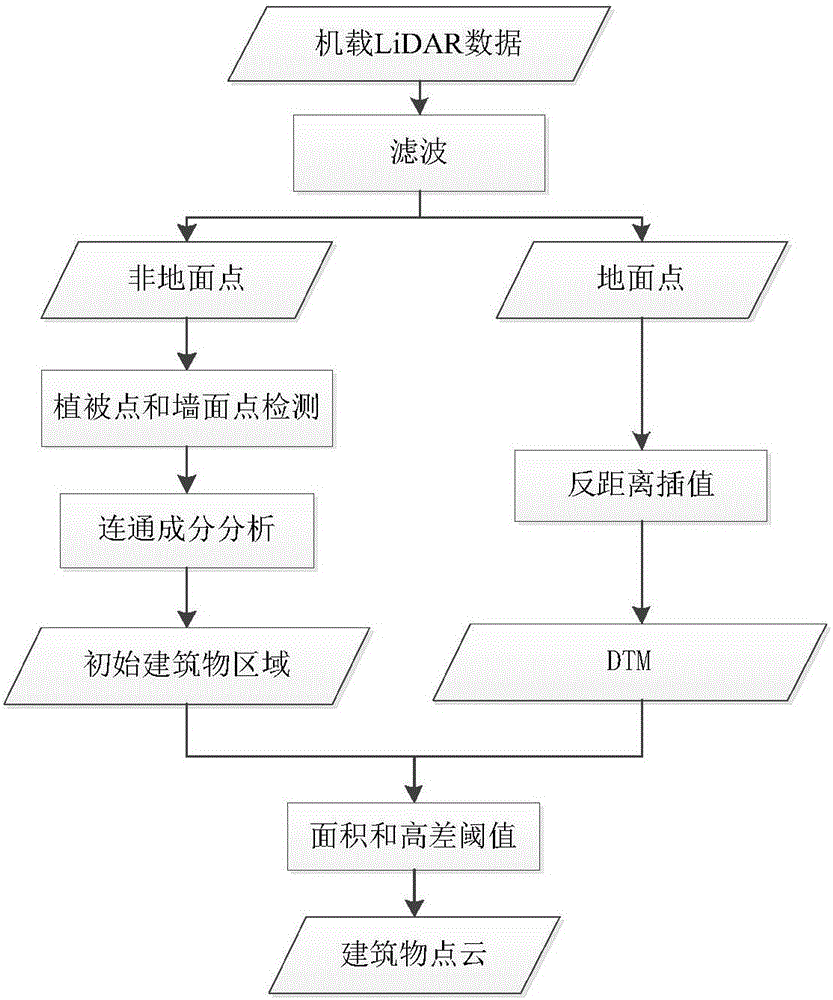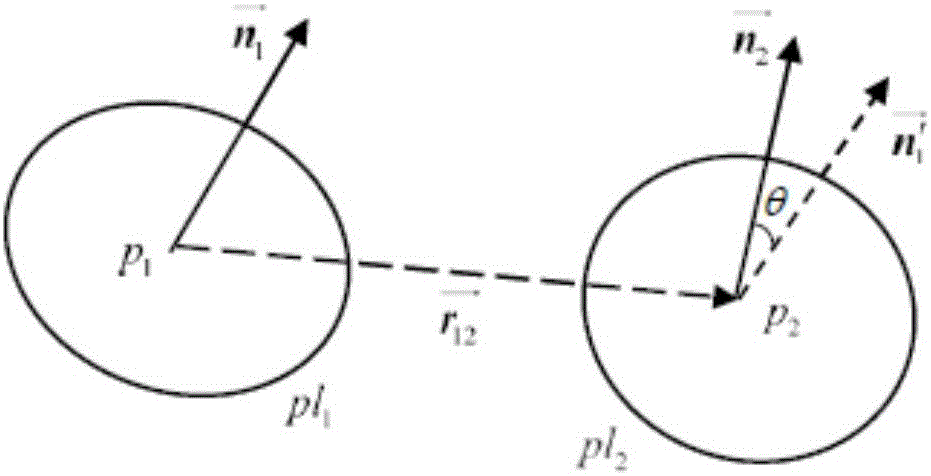Airborne laser radar data-based building three-dimensional reconstruction method
An airborne lidar and three-dimensional reconstruction technology, applied in image data processing, electromagnetic wave re-radiation, measuring devices, etc., can solve problems such as difficult reconstruction of buildings
- Summary
- Abstract
- Description
- Claims
- Application Information
AI Technical Summary
Problems solved by technology
Method used
Image
Examples
Embodiment Construction
[0018] The general idea of the patent of the present invention is as follows: figure 1 . Firstly, the airborne LiDAR data is filtered to obtain ground points and non-ground points, and then the building point cloud is extracted from the non-ground point cloud by combining point cloud feature information; secondly, the roof surface segmentation and Boundary outline extraction; finally, construct a closed polygon of each roof surface according to the key line segment of the roof obtained by combining the building boundary and the roof topological map, and the building roof model can be obtained through the combination of polygons. The wall surface can be constructed from the DTM or the elevation information of the ground point, so as to realize the reconstruction of the 3D model of the building.
[0019] (1) Building point cloud extraction
[0020] Based on the characteristics of airborne LiDAR data, a hierarchical architectural point cloud extraction method was established ...
PUM
 Login to View More
Login to View More Abstract
Description
Claims
Application Information
 Login to View More
Login to View More - R&D
- Intellectual Property
- Life Sciences
- Materials
- Tech Scout
- Unparalleled Data Quality
- Higher Quality Content
- 60% Fewer Hallucinations
Browse by: Latest US Patents, China's latest patents, Technical Efficacy Thesaurus, Application Domain, Technology Topic, Popular Technical Reports.
© 2025 PatSnap. All rights reserved.Legal|Privacy policy|Modern Slavery Act Transparency Statement|Sitemap|About US| Contact US: help@patsnap.com



